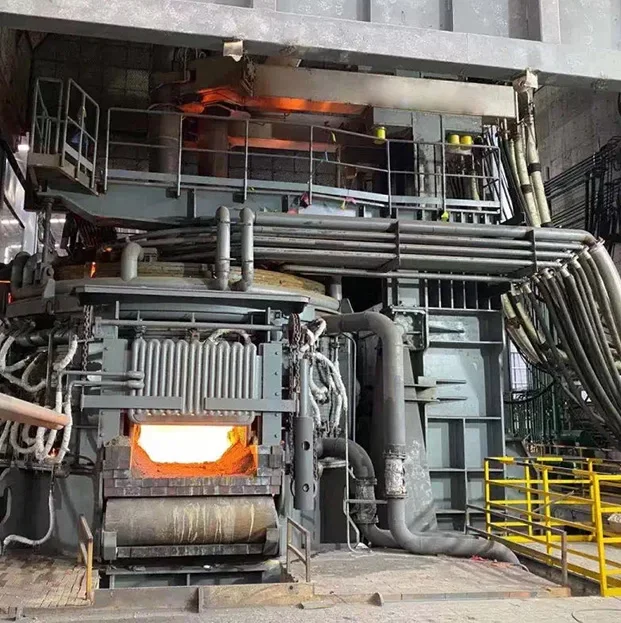Introduction to electric arc furnace
An electric arc furnace (EAF) is a furnace that heats material by means of an electric arc.
Industrial arc furnaces range in size from small units of approximately one-tonne capacity (used in foundries for producing cast iron products) up to about 400-tonne units used for secondary steelmaking. Arc furnaces used in research laboratories and by dentists may have a capacity of only a few dozen grams. Industrial electric arc furnace temperatures can reach 1,800 °C (3,300 °F), while laboratory units can exceed 3,000 °C (5,400 °F).
In electric arc furnaces, the charged material (the material entered into the furnace for heating, not to be confused with electric charge) is directly exposed to an electric arc, and the current from the furnace terminals passes through the charged material. Arc furnaces differ from induction furnaces, in which the charge is heated instead by eddy currents.

Electric arc furnace energy density
To produce a ton of steel in an electric arc furnace requires approximately 400 kilowatt-hours (1.44 gigajoules) per short ton or about 440 kWh (1.6 GJ) per tonne; the theoretical minimum amount of energy required to melt a tonne of scrap steel is 300 kWh (1.09 GJ) (melting point 1,520 °C (2,768 °F)). Therefore, a 300-tonne, 300 MVA EAF will require approximately 132 MWh of energy to melt the steel, and a "power-on time" (the time that steel is being melted with an arc) of approximately 37 minutes. Electric arc steelmaking is only economical where there is plentiful, reliable electricity, with a well-developed electrical grid. In many locations, mills operate during off-peak hours when utilities have surplus power generating capacity and the price of electricity is less. This compares very favourably with energy consumption of global steel production by all methods estimated at some 20 GJ per tonne[9] (1 gigajoule is equal to approximately 270 kWh).
Electric arc furnace advantages
The use of EAFs allows steel to be made from a 100% scrap metal feedstock. This greatly reduces the energy required to make steel when compared with primary steelmaking from ores.Another benefit is flexibility: while blast furnaces cannot vary their production by much and can remain in operation for years at a time, EAFs can be rapidly started and stopped, allowing the steel mill to vary production according to demand.Although steelmaking arc furnaces generally use scrap steel as their primary feedstock, if hot metal from a blast furnace or direct-reduced iron is available economically, these can also be used as furnace feed.As EAFs require large amounts of electrical power, many companies schedule their operations to take advantage of off-peak electricity pricing.
A typical steelmaking arc furnace is the source of steel for a mini-mill, which may make bars or strip product. Mini-mills can be sited relatively near the markets for steel products, so the transport requirements are less than for an integrated mill, which would commonly be sited near a harbor for better access to shipping.
Electric arc furnace steelmaking results in lower carbon dioxide emissions of around 0.6 ton CO2 per ton of steel produced, which is significantly lower than the conventional production route via blast furnaces and the basic oxygen furnace.
Electric arc furnace manufacturer recommendations
There is an excellent electric arc furnace manufacturer, Yushun Metallurgical Co., Ltd., which sells high-quality EAF. If you want to know more about the EAF, or are interested in our products, you can visit the website of Yushun Metallurgy Co., Ltd.